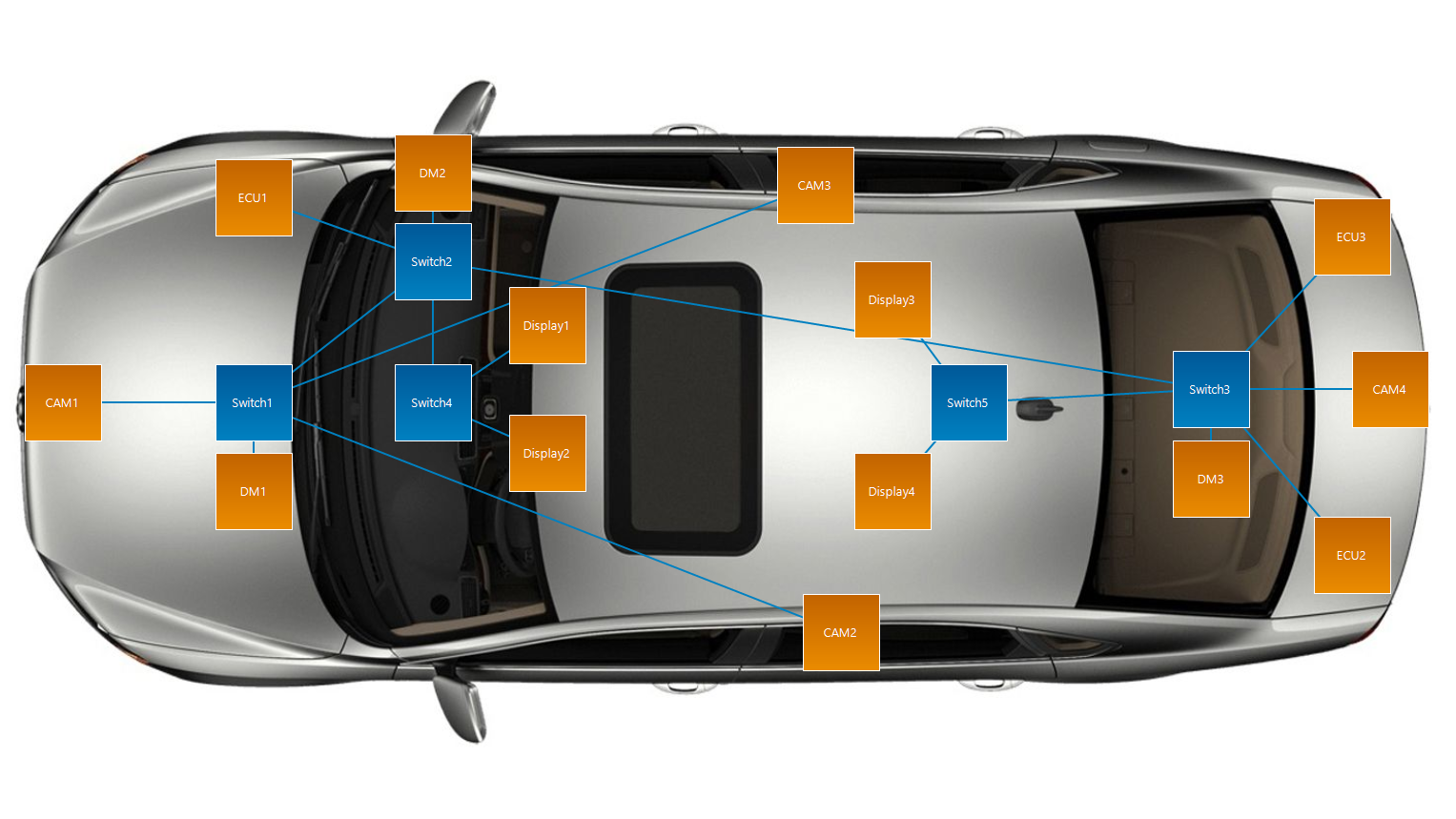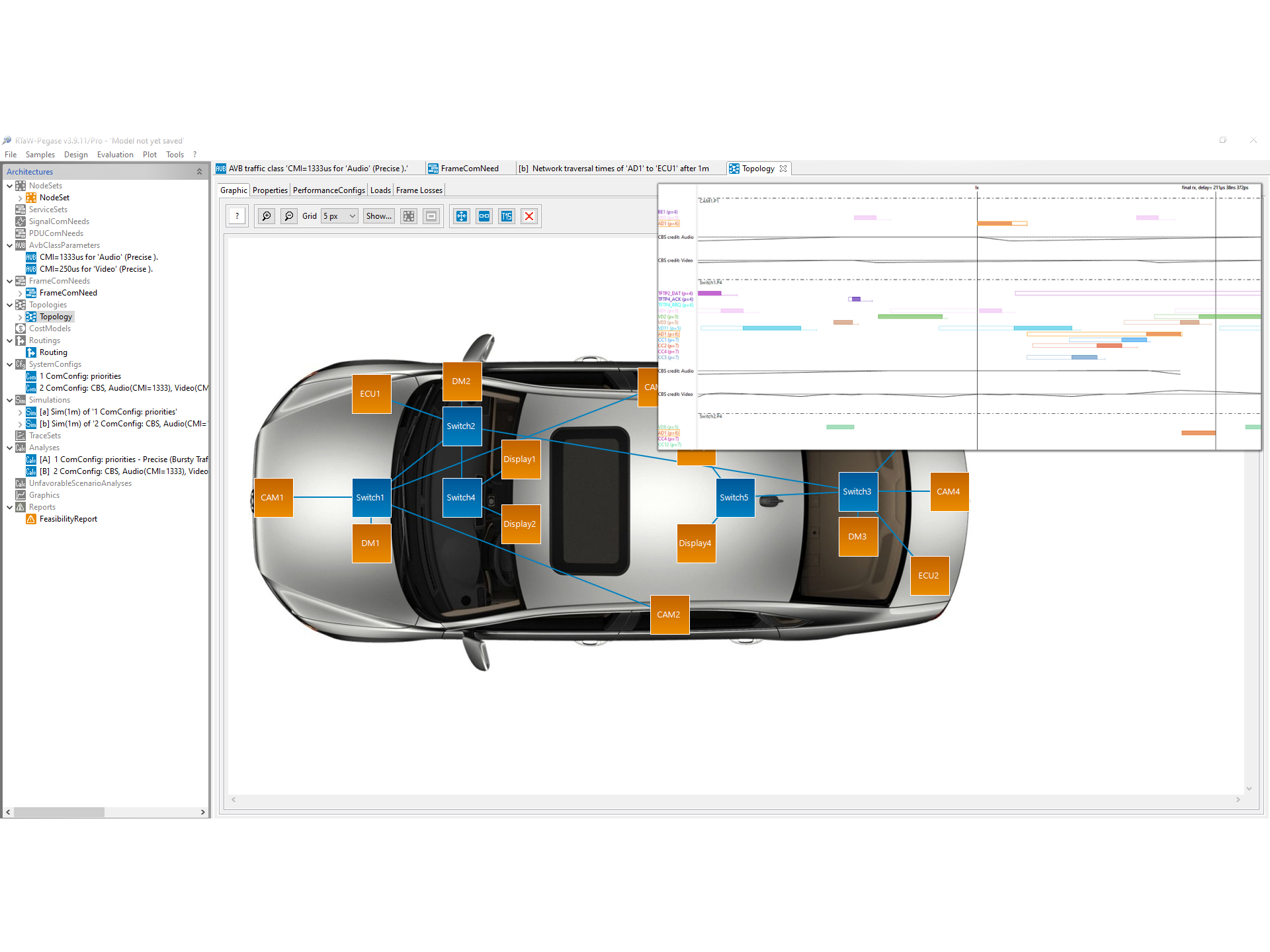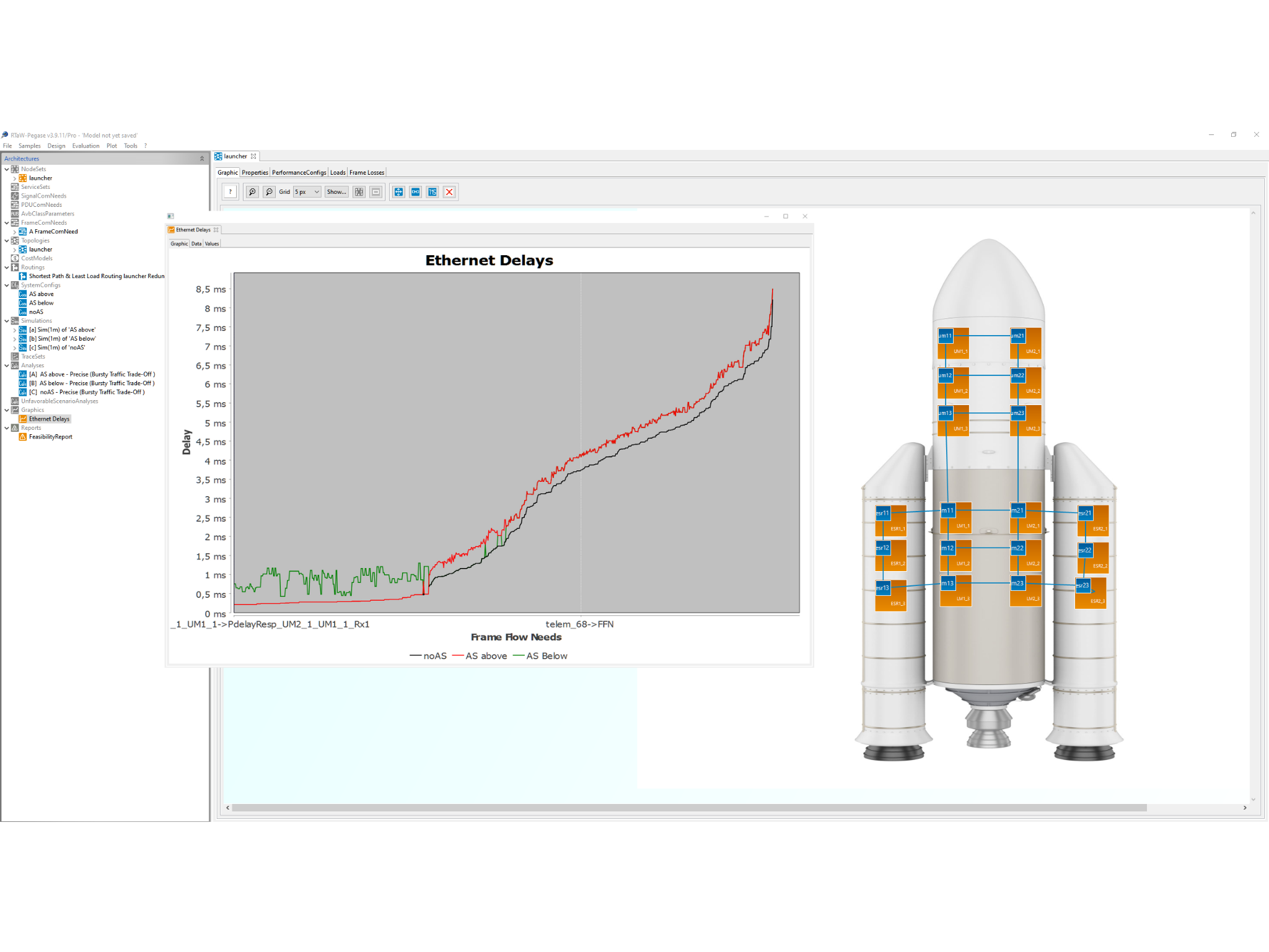
Increasingly communicative cars
My name is RealTime-at-Work and I deliver the RTaW-Pegase® solution, a reference in the field of real-time critical embedded systems. I offer my users the possibility to design, secure and develop embedded communication architectures in vehicles, aircraft or space systems, such as the new Ariane6 and the international space station. In the future, software will be used more and more to implement new connectivity, automation and customisation functions. “While in the past, the customer experience with a car was defined mainly by material aspects, software now plays a much more important role. This trend, in which software substantially shapes customer experience is known as Software-Defined Vehicle”, my CEO, Jérôme Michel, points out.
These hyper-connected vehicles and new related services produce an exponential rise in the volume of data. Designers are thus faced with the question of complexity. They must define an architecture which enables all systems to communicate efficiently. This architecture is the backbone to which all the vehicle’s systems are connected, from cruise control to windscreen wiper management and, of course, all the ECU (electronic control units); those embedded computers which manage the flow of information sent by numerous sensors.
For Jérôme Michel, “Good communication architecture must allow for development in terms of functions. You need to be able to add services to a vehicle and download new options rapidly. Like telephones, vehicles are increasingly personalised, with settings tailored to the customer’s requirements, and so designers need the help of design software.” Fifteen years ago, my founders created this software: Pegase.
The powers of Pegase
In 2009, I sold my first Pegase licences to industrial manufacturers in the automotive and aeronautics sectors. At present, my technology has matured and my team are focused on fostering performance and differentiation from my challengers. Pegase allows my users to model a communication architecture from the vehicle design phase. This is a software program with a simple interface which provides a descriptive, functional and systemic vision of all the embedded systems and their layout. Pegase then enables users to simulate system operation and to see how the data moves, packet by packet. As with traffic flows, the designer can “organise” traffic and decide to give priority to certain data packets.
According to Cédric Mauclair, an expert in network architecture at Airbus Helicopters: “RealTime-at-Work helped us to develop a temporal performance characterisation tool for the avionic systems used in the helicopters of the future. Within an ambitious scheduling and financial context, RealTime-at-Work delivered a finished product which met our expectations and is evolving even today.” I began collaborating with Airbus Helicopters in 2013 as part of this research project. Since 2020, we’ve been working together on a new form of deterministic high-speed communication technology. This collaboration has led to the publication of an article at an international conference.
It must be said that I stand out from my competitors thanks to my Generative Design solutions, which offer my users new design possibilities to meet the constraints of complexity and scalability. These new functions, based on machine-learning algorithms, enable users to explore and optimise various design options. In practical terms, this enabled Volvo, for example, to optimise the number of embedded calculators and to size its communication network more precisely. With the explosion in data volumes and the challenges of complexity and security, Pegase assists designers and helps them to make the right choices. I’m ready to spread my wings to new markets.
Taking RealTime-at-Work off the ground with NASA and the ISS
I currently employ fifteen people and while I may still be the Tom Thumb of the market, I’m holding fast to my position with a renowned product in an increasingly concentrated sector. According to Jérôme Michel: “In 2018, there were at least eight players in the running; right now, there are only three or four of us.” His mission is to boost my market presence while maintaining an efficient level of collaboration with the academic world to ensure I stay ahead of the competition. Mission accomplished. At present I serve numerous car and equipment manufacturers such as Bosch, particularly in the Chinese (SAIC motor, HHT, etc.) and European (Renault, Mercedes, etc) markets, and I am moving into the aerospace sector, more specifically as part of a contract with NASA and collaborations with Airbus Defense & Space, ArianeGroup and the CNES [French National Centre for Space Studies]. This take-off began in 2015, when I placed myself among the forerunners of the Ethernet TSN (Time-Sensitive Networking) protocols.
One step ahead with the Ethernet TSN protocols
Meeting the challenges of complexity and use, the TSN communication protocols have gradually become standardised and have taken over with their promise of high-quality service. As a leader in this market, my software was capable of anticipating this technological development and currently integrates all TSN standards, providing my customers with the stand-out product in the design software market for embedded electronic architecture. INRIA helped me to get started, by training my founder and through a technology transfer. At present, a partnership with INRIA Grenoble for the CertiCAN® tool means I can provide my customers with a proof of correctness of the results obtained by RTaW-Pegase®. For Jérôme Michel: “The fact that our software results are validated by a tool coming from a trusted third party such as INRIA boosts the credibility of Pegase in our markets. We’ve kept our start-up mentality and continue to collaborate with academic players to ensure the quality of our computing and to remain at the fore of scientific and technical fronts.” Affirm my business approach and safeguard the quality of my scientific network; that’s my architecture.
Scientific entrepreneurs
RealTime-at-Work is a start-up which has spread its wings and is taxiing to the runway. Pegase is the brainchild of two scientists specialised in real-time embedded systems and trained at INRIA. Nicolas Navet created RealTime-at-Work in 2007 and was joined in 2008 by Jörn Migge, who brought his scientific and technological expertise enriched by six years in the R&D department of PSA. Thanks to his knowledge of the automotive sector, it was in this area that he and Nicolas sold their first licences. At present, Jörn Migge is the technical director of RealTime-at-Work, and Nicolas Navet is pursuing his academic career as a Computer Science professor at Luxembourg University. He also created Cognifyer, a company which develops design-space exploration technology used by Pegase.
In 2018, Jérôme Michel took over the management of the company, with the task of developing sales activity in its markets. This Telecom Nancy engineer has industrial experience in automotive production management. Fascinated by the world of innovation, he invested in the development of start-ups prior to joining RealTime-at-Work. This is a proven model for the innovation sector and companies emerging from the research sphere; combining technical expertise and a business approach without neglecting either aspect. A firm believer in its product, RealTime-at-Work is pleased to have taken to the skies sky? at the right moment.

